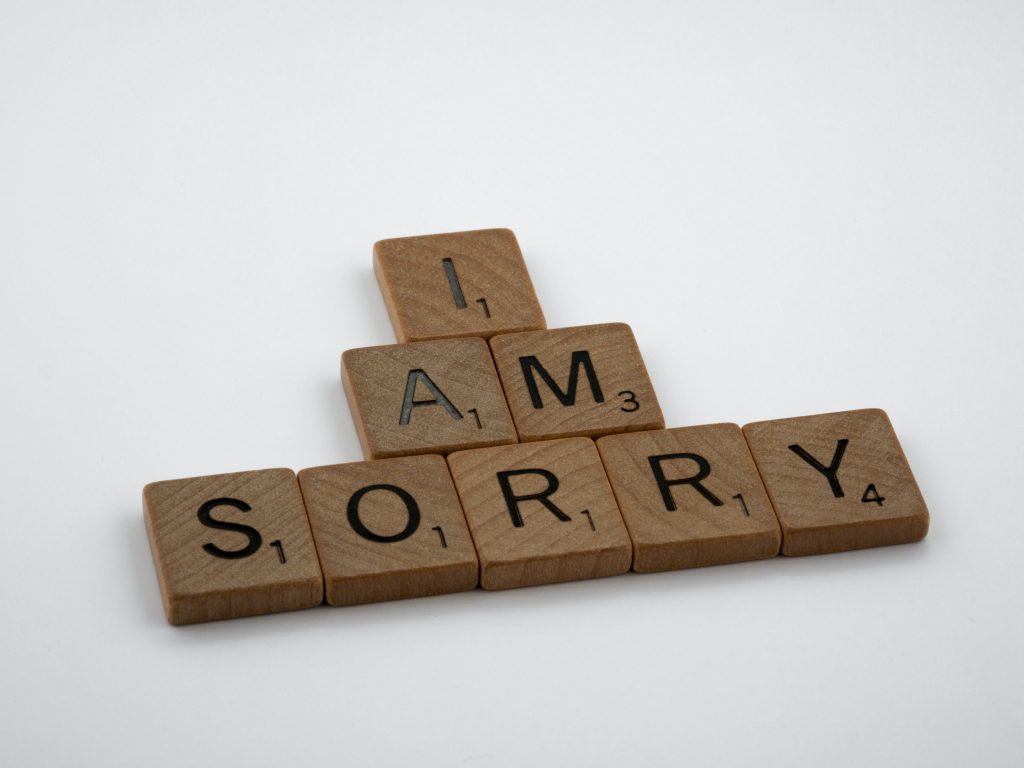How To Say Sorry The Right Way
Tips for saying your sorry the right way include owning up to what you did, not making excuses, and being specific and intentional about your apology.
This article is more than 2 years old

If you find it hard to say sorry when you’ve wronged someone, you’re not alone. “I’m sorry,” is one of the first phrases we’re taught as children, but if you’ve ever seen a small child apologize, it’s evident that difficulty in admitting wrongdoing is hardwired into most of us. However, learning how to apologize the right way is one of the most valuable things we can do.
Giving or receiving a genuine, heartfelt apology is a very powerful step toward healing. Unfortunately, a flippant attempt to say sorry can be equally powerful at destroying relationships. Throwing out a simple “oops” or “my bad” when you’ve genuinely hurt someone falls short of what’s needed to make amends.
NPR recently shared a new book that outlines why proper apologies are important and how to best let someone know you’re genuinely sorry. Sorry, Sorry, Sorry: The Case for Good Apologies is a research-based book that explains the power of a good apology. Co-authors Marjorie Ingall and Susan McCarthy offer six-and-a-half steps to crafting the perfect apology.
First, actually say sorry in those exact words. Don’t say things like, “I regret” or “I’m devastated” because those terms center on your feelings. A bad apology fails to address their hurt feelings; that’s why saying “I’m sorry” is best.
Second, it’s imperative to state what it is that you’re apologizing for. Be specific in what you did and don’t dismiss the impact your actions had on the other person. You don’t want to just say sorry, but admit that you did something wrong.
The third step links to the second in that you must own what you did. State clearly that you understand why your actions were hurtful. This is perhaps one of the hardest steps in the process but it’s also one of the most powerful—and humbling—actions a person can take.
Fourth, don’t undo what you accomplished in steps one through three by making excuses for your behavior. Saying things like, “I was tired,” or “I didn’t mean to,” is really a way to make ourselves feel better for what we did. Few of us set out to hurt other people intentionally, so making excuses doesn’t really add anything to an apology.
The fifth step is to say sorry with an emphasis on your commitment to not do that particular thing again. Don’t just make that an empty promise. Explain the steps you’re taking to make sure you don’t slip up like that in the future.
Sixth, when appropriate, make reparations. Tell the other person what you are going to do to fix what you did wrong, whether that’s buying a replacement for something you broke or signing up for anger management classes. Put some action behind your words when you say sorry.
“These six steps are relevant for adults, for children, for corporations, for institutions, for governments,” Ingall said. “And six-and-a-half is ‘listen.’ People want to be heard, and don’t jump over them. Let the person that you hurt have their say.”
Also, remember that it’s never too late to say sorry. If you’re still feeling guilty over something hurtful you did years ago, send a short letter, email, or text apologizing for what happened. The relationship may not be resurrected, but a sincere apology will help both of you move on past the hurt.







